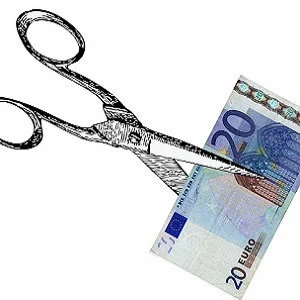Confronted with pressure to reduce costs, many healthcare
providers are making counterproductive changes that sometimes actually lead to
higher overall costs and can even lead to lower quality.
Here are some top mistakes healthcare providers make when trying to cut
costs:
1. Work from the information that is most readily available.
Findings from a study in a Harvard
Business Review article by Robert Kaplan and Derek Haas show that
to identify cost-cutting opportunities, hospital administrators typically work
from the most easily accessible information which is trusted by them—namely,
the line-item expense categories on their profit and loss statements. Those
categories, such as personnel, space, equipment, and supplies, are attractive
targets, as reducing spending on them appears to generate immediate results. However,
these reductions usually do not consider the best mix of resources required to
deliver high quality patient care in an efficient way.
See Also: Cost Savings from Perioperative Goal-directed Therapy
2. Optimise the number of patients seen.
Pushing doctors to see a high number and large mix of patients seems like a good idea when treatments are poorly reimbursed under mechanisms such as fee-for-service. But spending less time with each patient can lead to inefficient care and inappropriate treatment plans being decided on. For many managers, this is an obvious mistake, but they still make it, as optimising the number of patients seen can provide a quick effect on accounts. However, if you remain patient and focus on the highest quality of care, this is likely to be far better for healthcare quality, costs, and the reputation of your organisation.
3. Fail to integrate all clinical staff.
In their article, Kaplan and Haas suggest that the people who actually treat patients are rarely involved in decisions about achieving savings, which is best changed. Providers could use valuable insights and information from clinical personnel to benchmark and standardise medical practices in ways that could both lower costs and improve care.
4. Cutting back on support staff
The payroll is often considered a quick way to cut costs, and targeting support staff can seem like the best option to avoid an impact on patient care. But freezing salaries and cutting non-clinical staff numbers can be counterproductive, as this increases the work load for clinical staff and can lead to less efficient operations, which ultimately raises the cost of treating patients. In their study, Kaplan and Haas found that that specialists’ time is often ten times more costly than their assistants’ time.
5. Underinvesting in space and equipment
Providing more space and equipment can lead to quicker turnaround times (for example, if a surgeon has to wait for a room to be cleaned or equipment to become available before she can move on to her next patient, then a loss in productivity will result. And personnel costs are high. Kaplan and Haas found that space and equipment costs were consistently an order of magnitude smaller than personnel costs, but this should not cloud your judgement when it comes to making trade-offs and investment decisions. Considering the bigger picture, with relationships between resources, can help to improve the productivity of the organisation’s most expensive resources.
Image Credit: Pixabay






